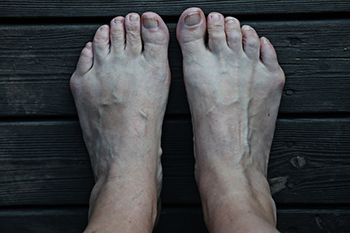
Bunionettes, also known as tailor's bunions, are a common foot deformity that affects the joint at the base of the little toe. Like their larger counterparts, bunions, bunionettes develop gradually and can cause significant discomfort and inconvenience. These bony protrusions often result from pressure or misalignment of the fifth metatarsal bone, leading to the toe deviating outward and the joint protruding. While the exact cause of bunionettes vary, factors such as wearing narrow or tight-fitting shoes, genetic predisposition, and underlying foot conditions can contribute to their formation. Individuals with bunionettes may experience pain, swelling, redness, and difficulty wearing certain shoes. Ignoring bunionettes can lead to worsening symptoms and potential complications, including bursitis or hammertoes. If you have a bunionette, it is suggested that you visit a podiatrist who can offer the treatment that is right for you.
If you are suffering from bunions, contact one of our podiatrists of Riznyk Podiatry. Our doctors can provide the care you need to keep you pain-free and on your feet.
What Is a Bunion?
A bunion is formed of swollen tissue or an enlargement of boney growth, usually located at the base joint of the toe that connects to the foot. The swelling occurs due to the bones in the big toe shifting inward, which impacts the other toes of the foot. This causes the area around the base of the big toe to become inflamed and painful.
Why Do Bunions Form?
Genetics – Susceptibility to bunions are often hereditary
Stress on the feet – Poorly fitted and uncomfortable footwear that places stress on feet, such as heels, can worsen existing bunions
How Are Bunions Diagnosed?
Doctors often perform two tests – blood tests and x-rays – when trying to diagnose bunions, especially in the early stages of development. Blood tests help determine if the foot pain is being caused by something else, such as arthritis, while x-rays provide a clear picture of your bone structure to your doctor.
How Are Bunions Treated?
If you have any questions, please feel free to contact our office located in Orchard Park, NY . We offer the newest diagnostic and treatment technologies for all your foot care needs.